

|
I am constantly amazed at the diversity in the genus Rhododendron. We often decide on which plants to purchase because of the flowers but the blossoms rarely last for more than a week or two. It is perhaps more important to consider the plant habit and foliage since that will be the focus in the garden for the rest of the year.
Fortunately, there are rhododendrons that can fulfill almost every niche. Some rhododendron species like R. arboreum can eventually become tall trees with large trunks. Others can be dwarf and may grow only a few inches high. The evergreen azalea R. nakaharae can be used as a groundcover. Some species like R. sinogrande have huge leaves on the order of a yard (1 m) in length. Others like 'Kazan' have very small leaves about a half-inch (1 cm) in length. The smallest leaves in the genus belong to R. tsusiophyllum, an evergreen azalea species from Honshu, Japan. Leaf shapes can be oblong, round, pointed, or extremely narrow. Foliage colors can vary from dark to light green and the leaf surface can be shiny, dull, deeply textured, or hairy. Some forms can have leaves that are blueish, and others can have reddish, orange, or yellow tones. The new growth on many rhododendrons can be very striking, too. Some have stems and leaves that are covered with thick felt-like hairs called indumentum which can make the growth white, tan, or deep rust color. That indumentum will typically remain on the underside of the leaves which can provide an interesting contrasting color dynamic to the plant. One of the problems with such diversity is that rhododendrons in the wild are adapted to very different conditions depending upon where they grow. Few of us live in locations with a climate that can support them all. Some species are native to alpine regions and require cool weather. They typically suffer in hot, humid climates. Others are adapted to hot, humid conditions and they often cannot take the cold. Others grow in temperate rain forests and require constant moisture. Some may require shade to survive but others may need full sun. Vireya rhododendrons are tropical plants and they cannot withstand frost. Because so many of us want to grow those diverse forms, we often discover that they will not survive in our more challenging climates. That has resulted in a very active hybridizing program in the American Rhododendron Society. For many years, amateur hybridizers have been crossing plants that are hardy in their regions with the types of plants they want to grow. Hopefully, some of the seedlings they raise will be hardier forms with some of the desired characteristics that will move them closer to the desired goal. Check out the ARS Seed Exchange and look for some crosses that may have potential in your area. Every time we make a cross, it is similar to shuffling a deck of cards. The more hands we deal, the higher the chance we might get that winning combination. The photo at the top of the page shows a portion of Joe Bruso's garden in Massachusetts outside of Boston. He has raised most of his plants from seed and continues to make extensive crosses breeding for exciting leaf forms. Note: Special Thanks to Linda Derkach, Joe Bruso, Norm Beaudry, and Mike Stewart who provided some images used in this piece. Their names are indicated below the pictures they took as displayed in this site. All other photos were taken by the author. |

R. makinoi seedlings raised by Joe Bruso in his Massachusetts garden. 
|

Large leaf species R. sinogrande |

R. sinogrande hybrid in the Royal Botanic Garden, Benmore |

Mike and Maria Stewart inspect R. hodgsonii at Glendoick, Scotland |

R. thayerianum and other species along a path at the RSBG |

'Silbervelours' at Bremen Rhododendron Park, Germany |

Multi-trunked 'Russellianum' at Benmore Castle, Scotland |

Dwarf R. pronum with a ground cover of R. calostrotum at the RSBG |
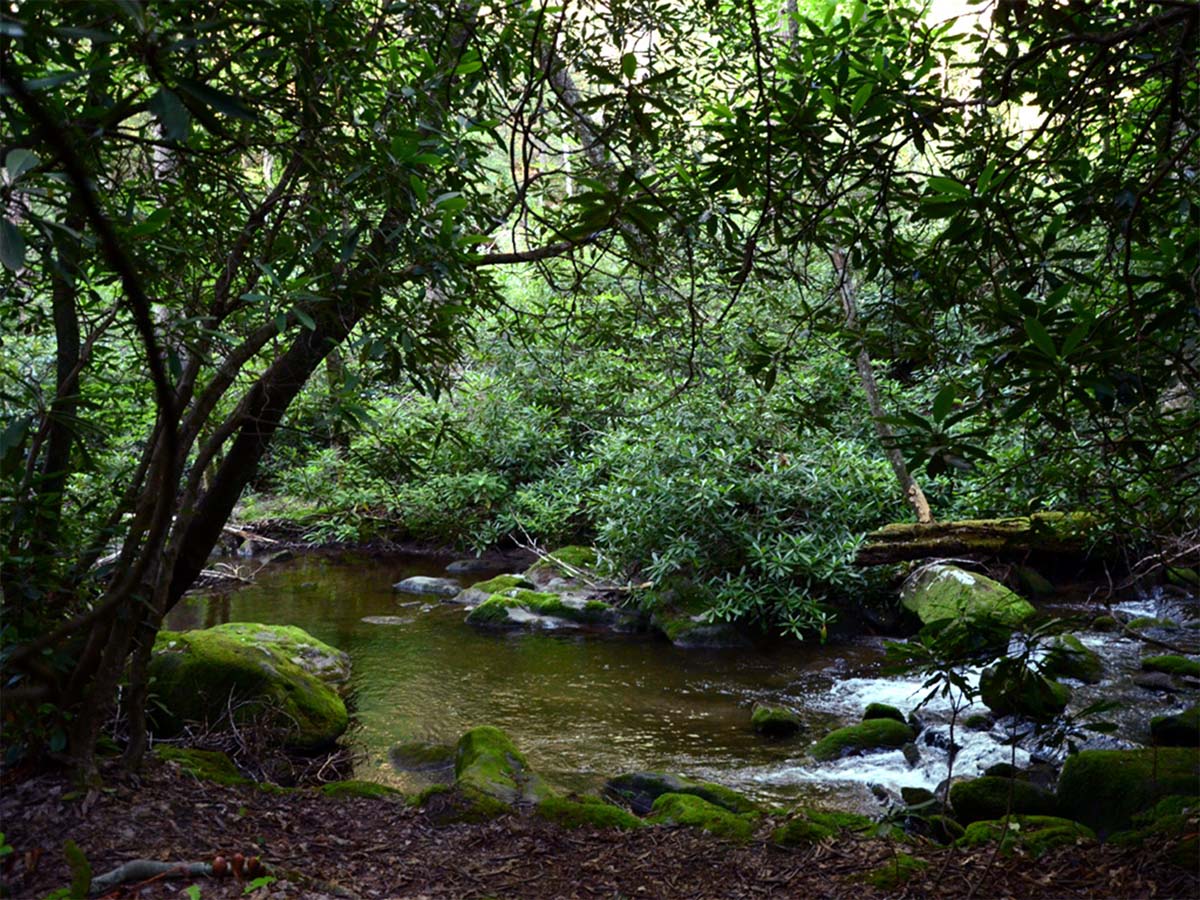
R. maximum along Forge Creek, Cades Cove, Tennessee |
| Large Leaves | |||||||||||

|
 |

More Large Leaves
| | ||||||||
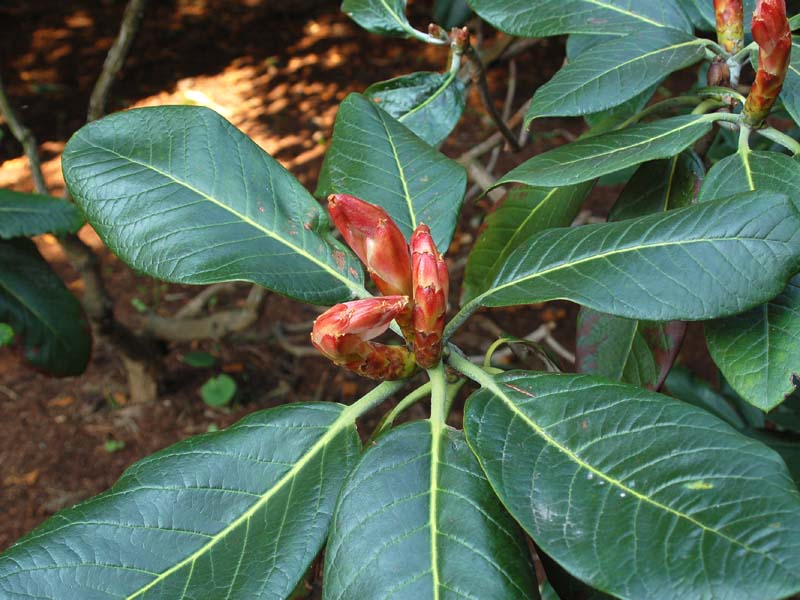
|
 |
 | |||||||||
| More Large Leaves | |||||||||||

|
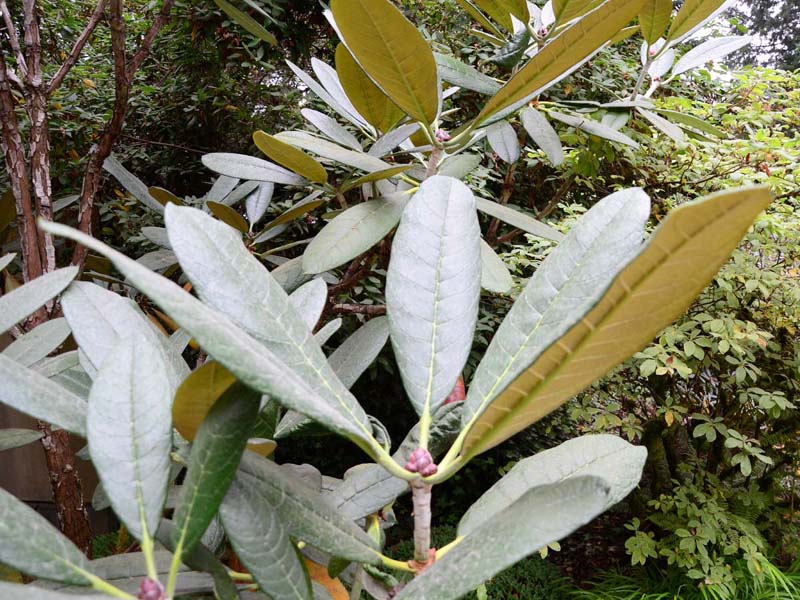 |
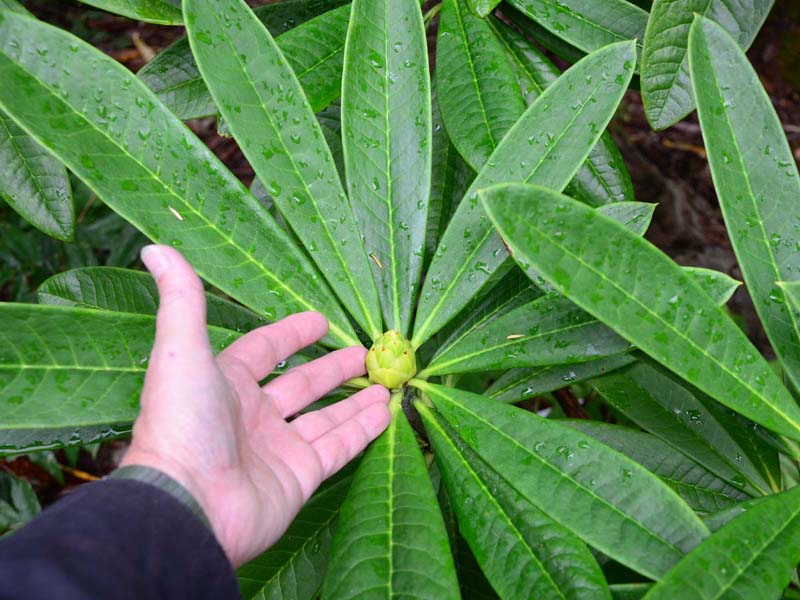
Small Leaves
| | ||||||||

|
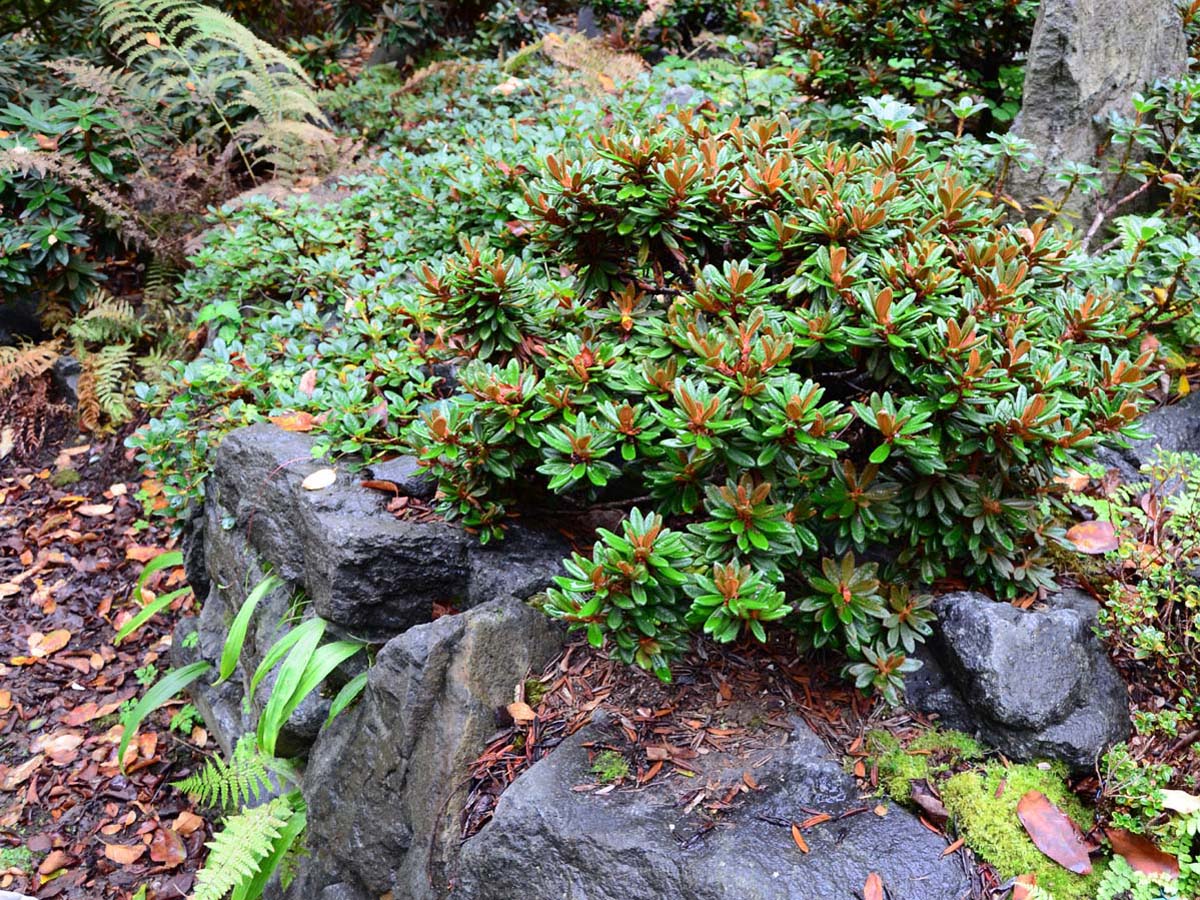
|
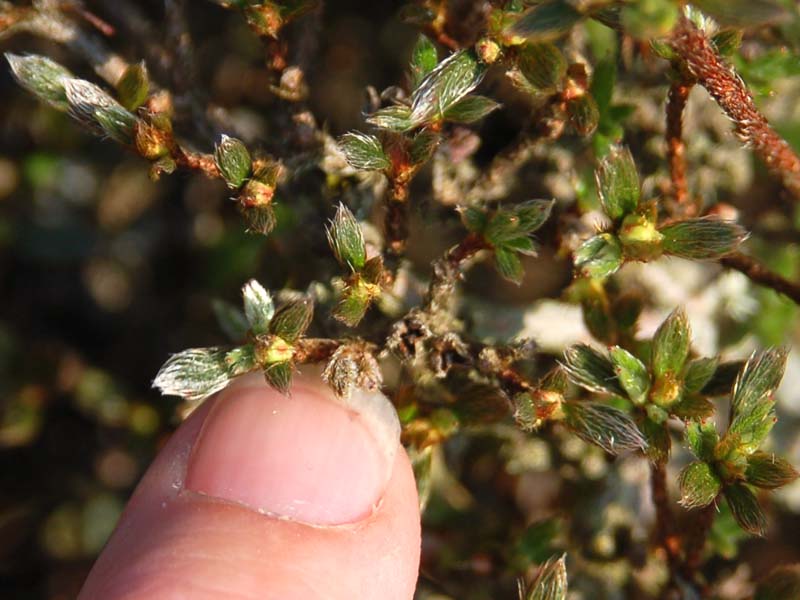
| |||||||||
| Groundcovers | |||||||||||

|

|
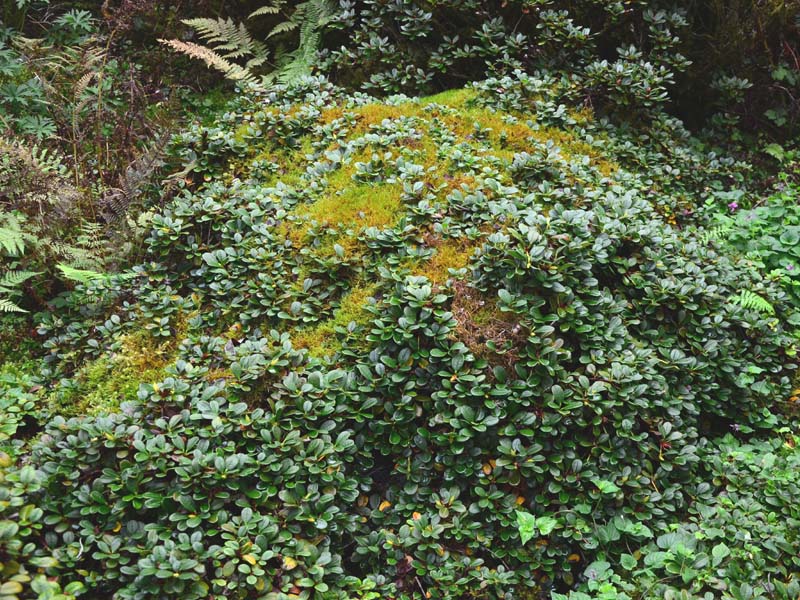
| |||||||||
| Landscape Plants | |||||||||||

|
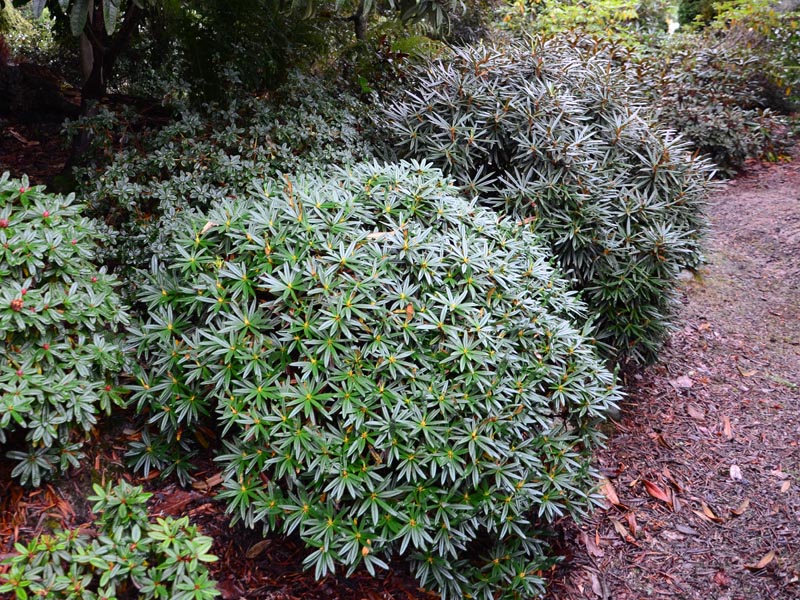
|
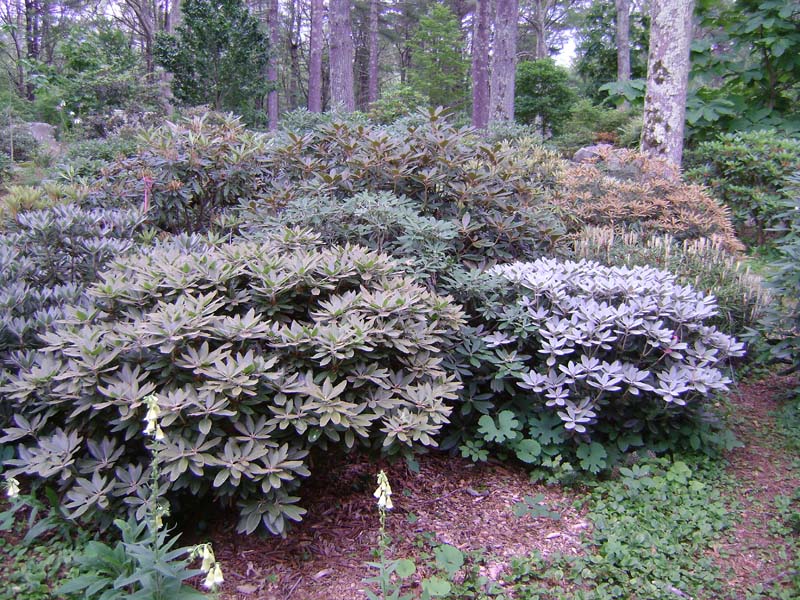
| |||||||||
| Specimen Plants | |||||||||||

|

|
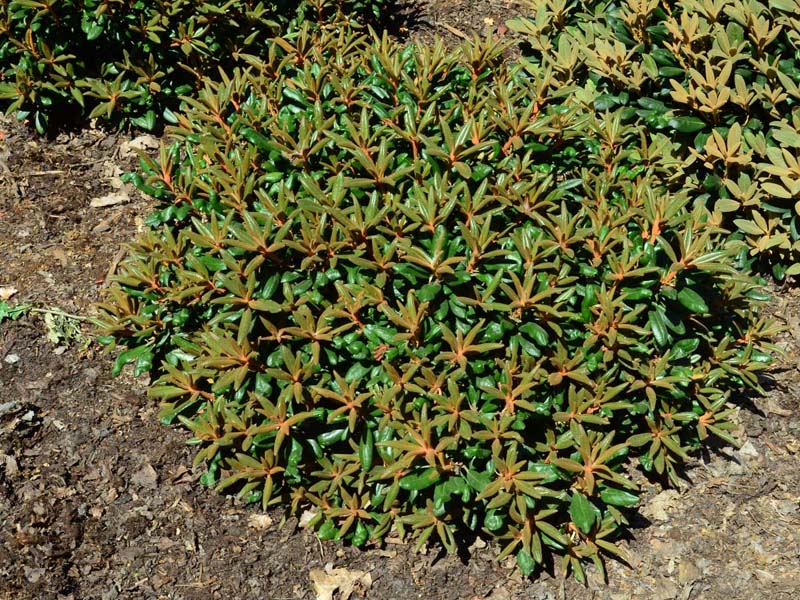 | |||||||||
| Contrasting Buds | |||||||||||

|
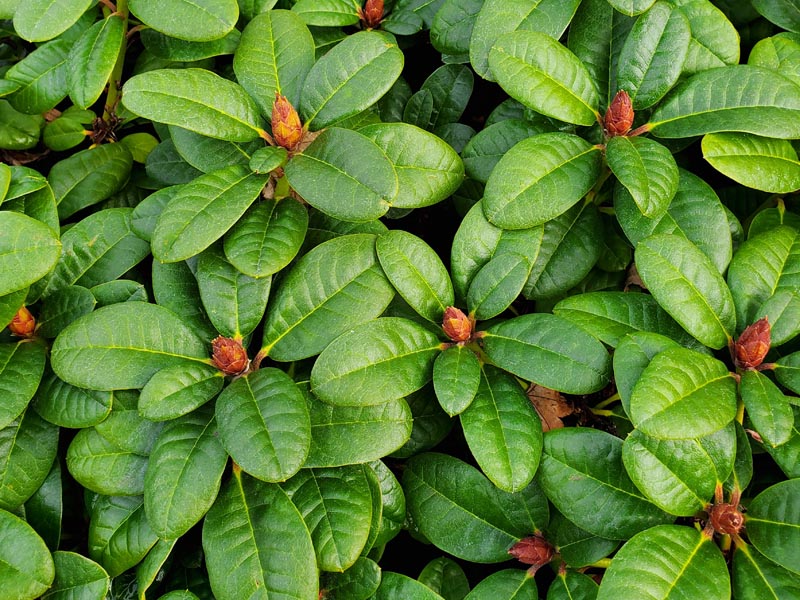 |

Flat and Shiny Leaves
|
| 
R. coelicum
| 
| 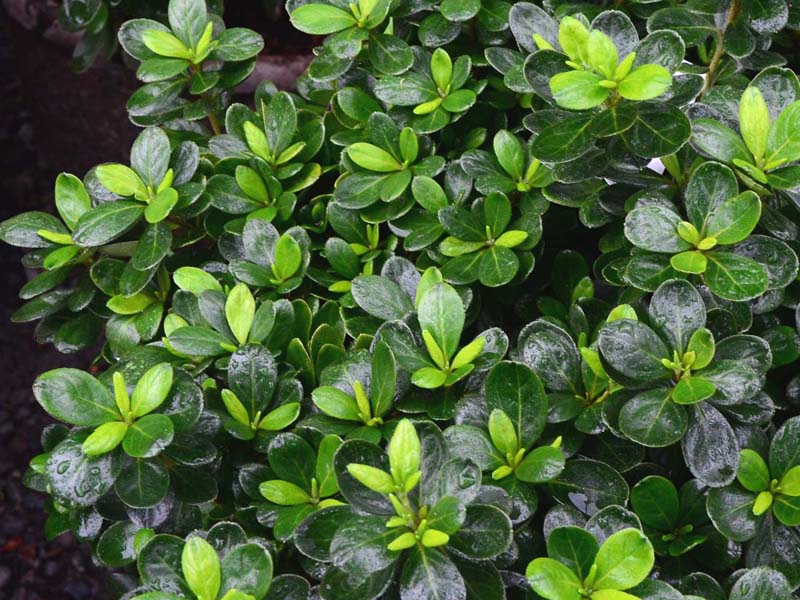
Deeply Veined or Textured Leaves
| | ||||

R. uvarifolium |
 |
 R. edgworthii | |||||||||
| Recurved Leaves | |||||||||||
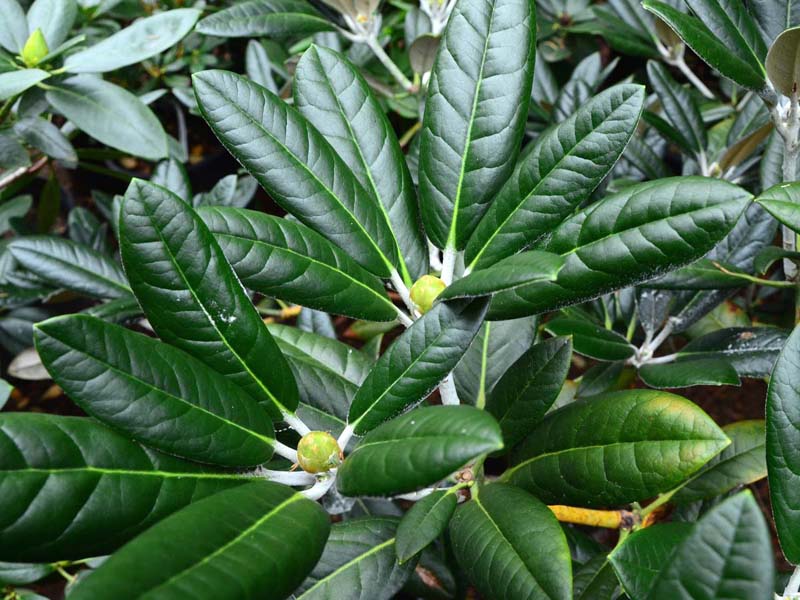
|
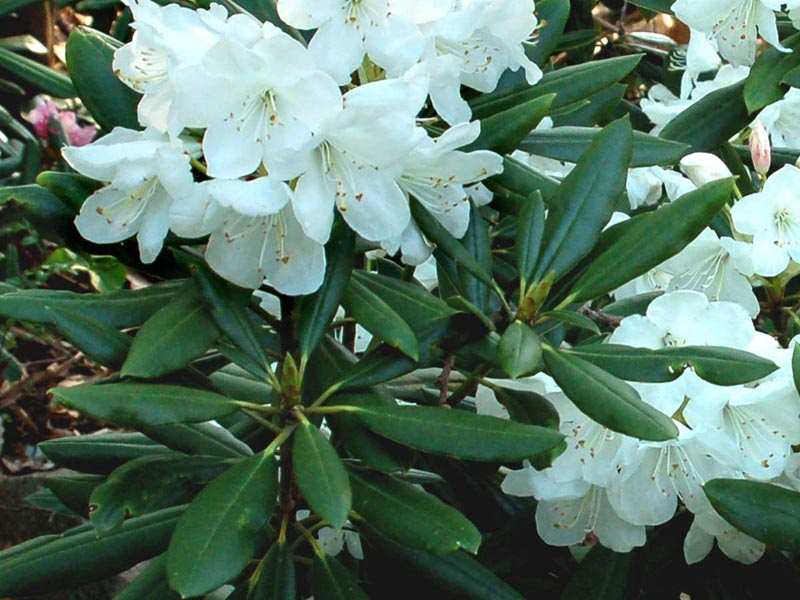
R. hyperythrum |
 R. clementinae Photo L. Derkach | |||||||||
| Blueish Leaves | |||||||||||
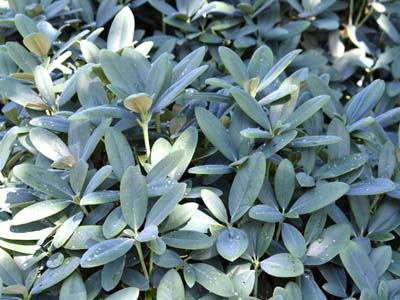 'Blauschimmer' |
 R. campanulatum var. aeruginosum |

Heavily Indumented New Growth
| | ||||||||
 R. tsariense var. 'Yum Yum' |
 |
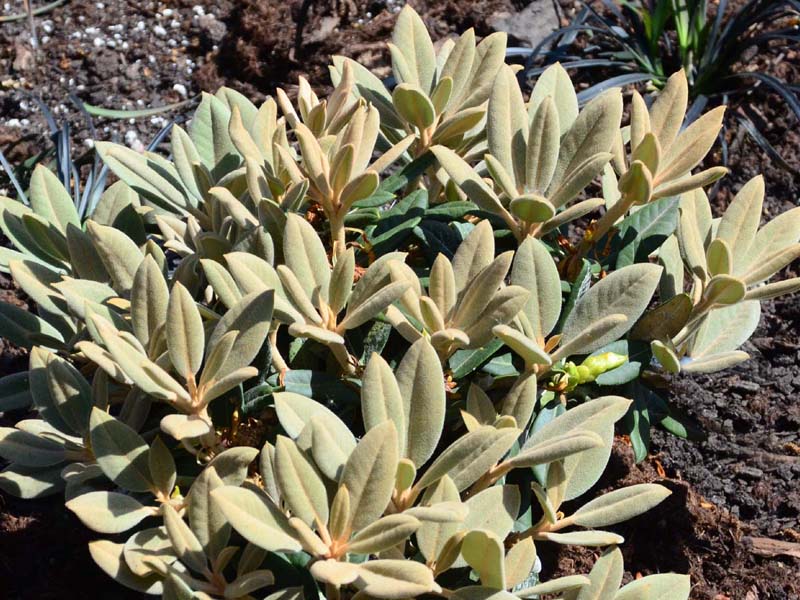
Variegated Leaves
| | ||||||||

|
 |
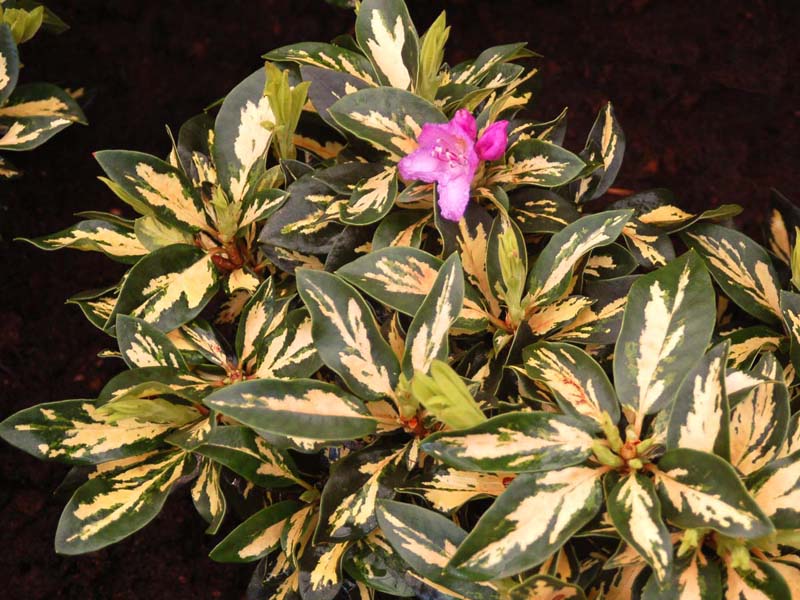
Red or Pigmented Leaves
| | ||||||||
 'Everred' ('Ever Red') |
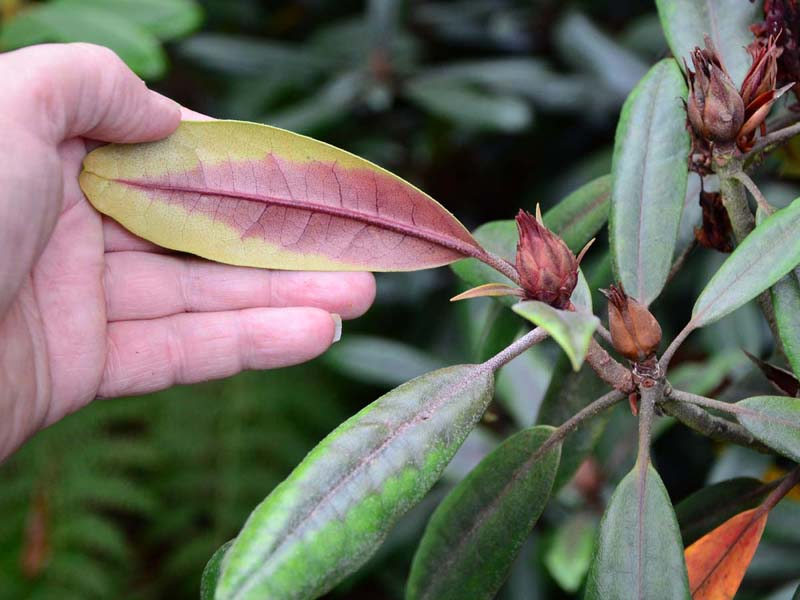
|

Hairy New Growth
| | ||||||||

|

|

Colorful New Growth
| | ||||||||
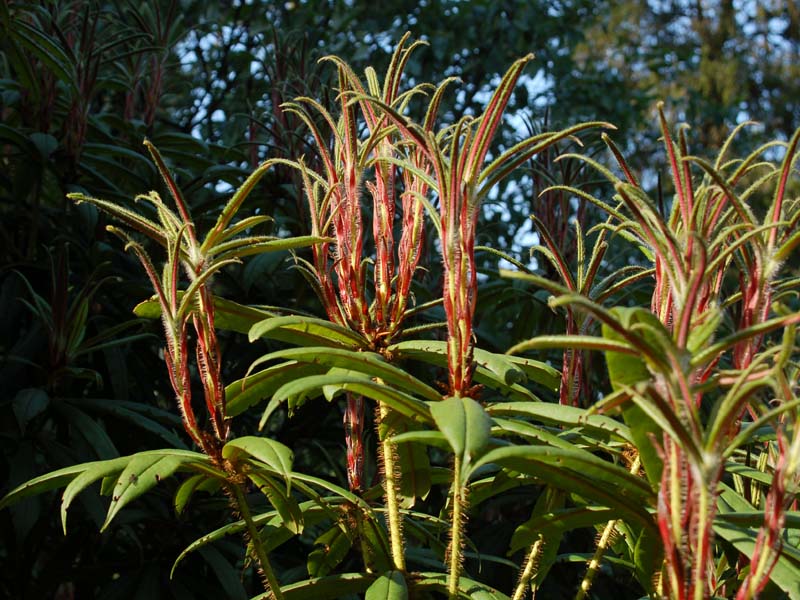
|

|

Long or Needle Shaped Leaves
| | ||||||||
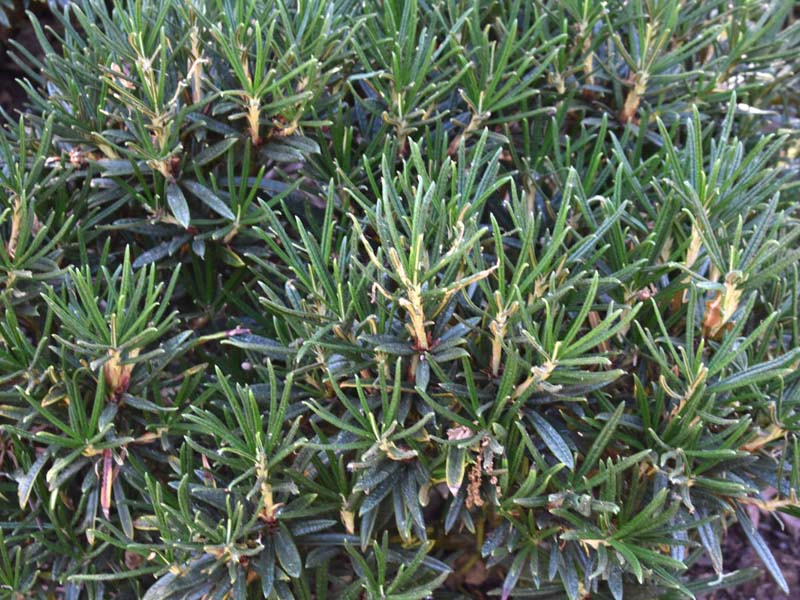
|

|
 | |||||||||
| Rounded Leaves | |||||||||||

|

|
 | |||||||||
|
Why We Make Crosses This is an example of a hybrid between two species. R. makinoi which is pictured on the left was crossed with R. yakushimanum on the right. The center image shows the hybrid that resulted. It has very attractive foliage which has qualities from both parents. | |||||||||||

|

|
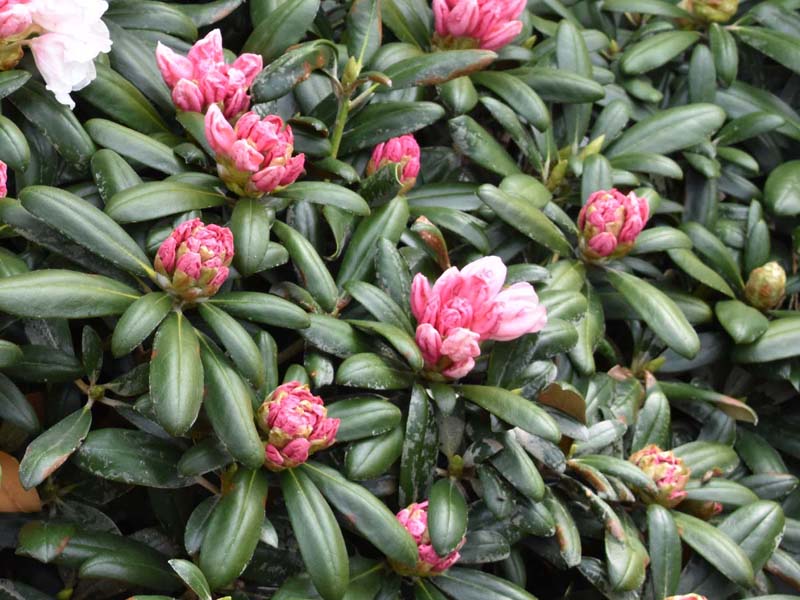
| |||||||||
|
Another Hybridizing Example - A Large Leaf Rhododendron Called 'Hardy Giant' Very few large leaf species are hardy in the eastern United States, but naturally, most of us want things we cannot have. Donald Hardgrove was a hybridizer on Long Island and he made this cross but did not raise the plant. Don had a hardy R. fortunei in his garden but he got the pollen of R. fictolacteum (right) from Guy Nearing who collected it when he was touring in England. When the seed ripened, Don sent some back to Nearing and he shared it with the Knippenbergs in New Jersey. They were the ones who selected and named their best plant from the cross as 'Hardy Giant'. It has proven to be one of the largest leaf rhododendrons that is hardy in the East. Many hybridizers are now crossing that plant with other large leaf forms, hoping to get more large leaf plants. | |||||||||||

|
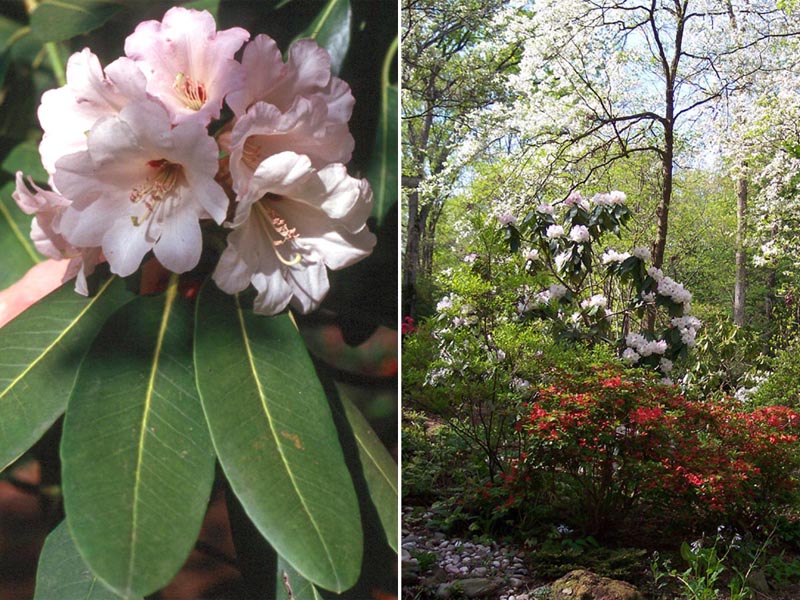
|

| |||||||||
|
The Rex Complex These large leaf species are prominent in Southeast China and the Eastern Himalayas and they are also closely related. They form what is called a "cline" because the species tend to merge into one another as one transitions between regions where the primary forms grow. R. rex ssp. rex is the eastern most species and it is native to Southeastern Sichuan and Southeastern Yunnan. As one travels westward toward the Himalayas, this species gradually merges into R. rex ssp. fictolacteum. Traveling even farther west into Western Yunnan and the eastern Himalayas, the species eventually merges into R. arizelum. For more information, check out Steve Hootman's excellent discussion on The Rex Complex Explained that he taped at the Rhododendron Species Botanical Garden in May of 2020. | |||||||||||

|
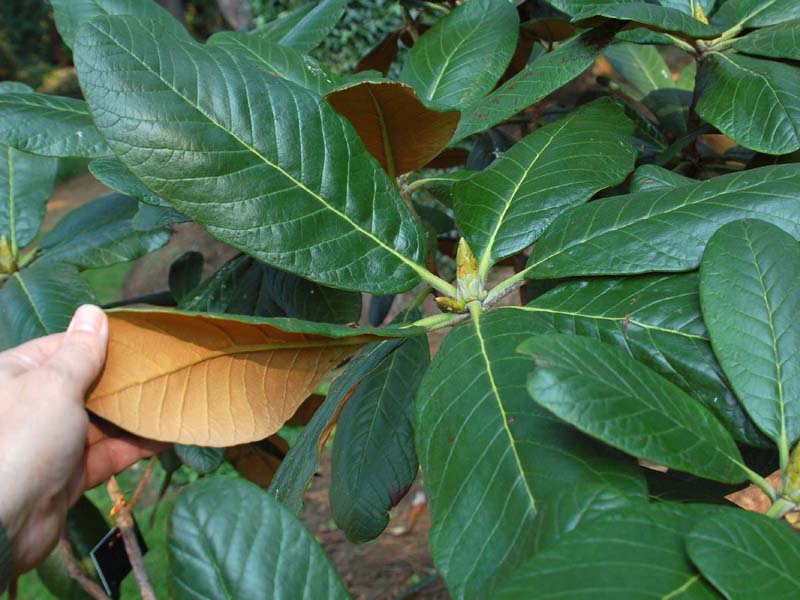
|
 | |||||||||
|
Evergreen Azaleas - Winter Foliage Variations |

|
Cultivars Pictured to the Left
|
|||||||||
For an excellent glossary of botanical terms, check out Steve Henning's Rhododendron and Azalea Pages.
| |||||
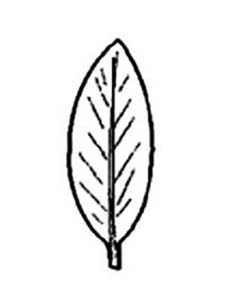
Elliptic |

|

| |||
| |||||

Lanceolate |

R. lanatoides |

R. keiskei | |||
| |||||

Ovate |
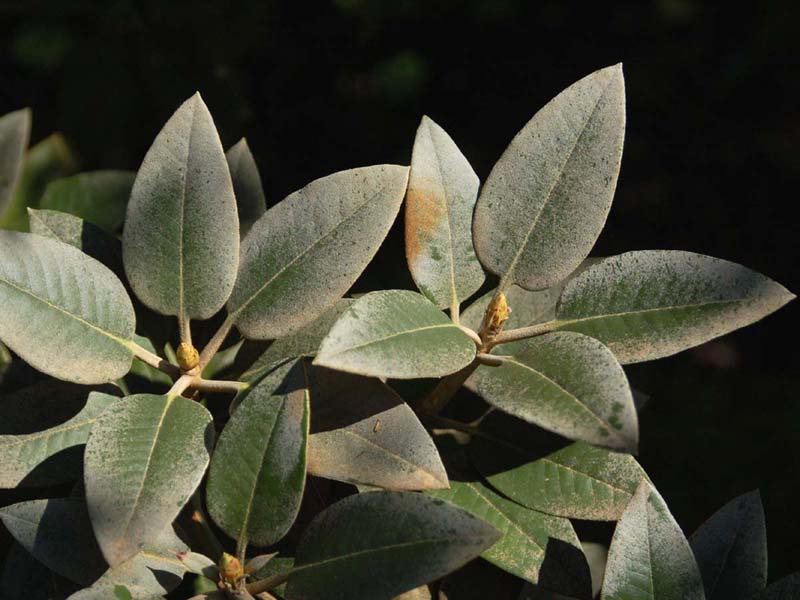 |
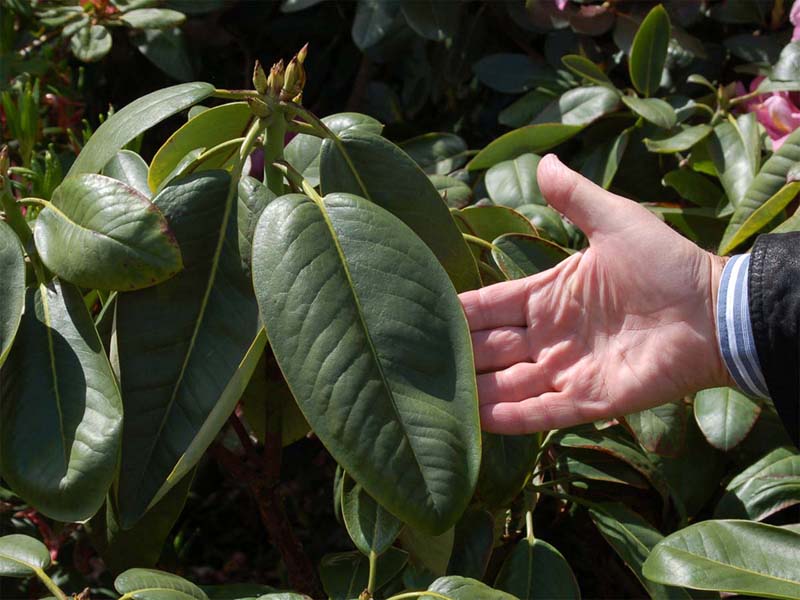 'Inamorata' | |||
| |||||

Obovate |
 R. fulvum ssp. fulvoides |

|
| ||

Oblong |
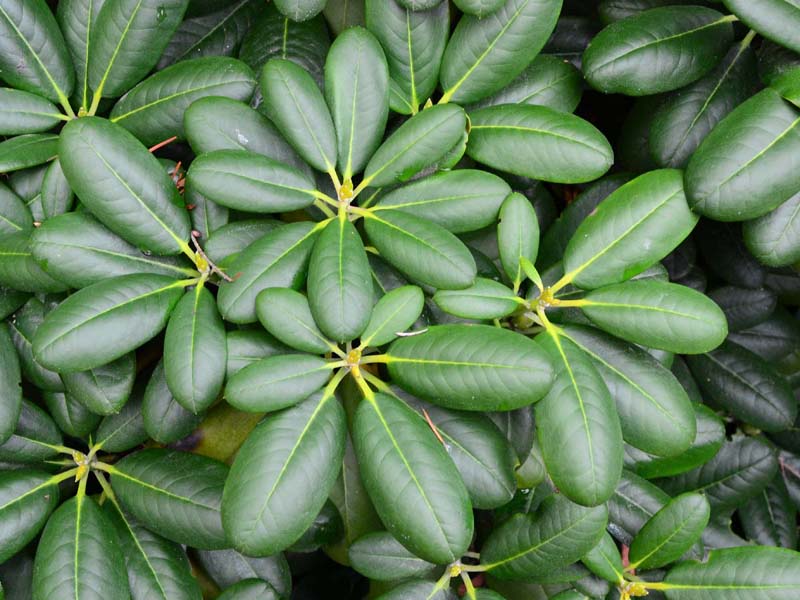 |

|
| ||
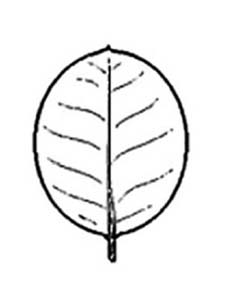
Orbicular |
 |

|
| ||
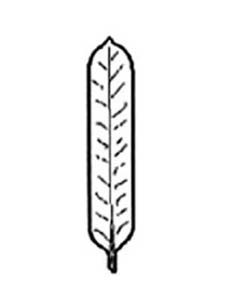
Linear |
 |
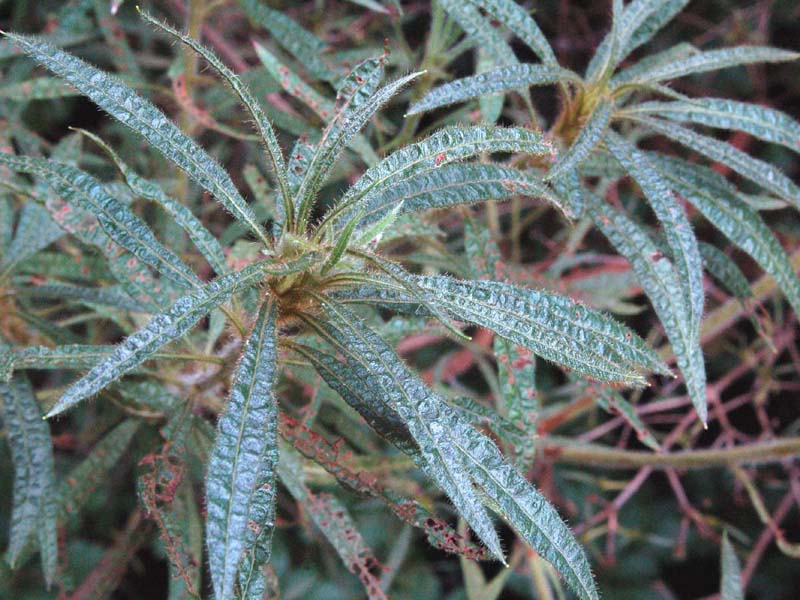 | |||
|
Any discussion of rhododendron foliage must include examples of indumentum and tomentum. Indumentum refers to a wooly covering of hairs found on the undersides of many rhododendron leaves. The covering is persistent and can remain on the foliage until the leaves eventually drop. Tomentum refers to the hairs on the top surface of the leaf which are loosely attached. They eventually wear off as the season progresses. By late fall or winter, the tomentum is usually gone and the dark green surface of the leaf underneath is fully exposed.
One advantage with plants that have indumentum, at least in my garden, is that deer in my area do not find that fuzz palatable. Hungry deer will eat almost anything and when pressed they will eventually eat rhododendrons with indumentum. However, at least they are not their first choice for fodder. Indumentum and tomentum can provide a second striking display after the flowers are gone. As the new growth emerges, it can be covered by those hairs which will make the new leaves a different color. The hues can range from white through shades of cream, tan, brown, or even reddish orange. The colors frequently change as the season progresses and white indumentum will often change to tan or rust color in subsequent months. Most rhododendrons with indumentum are "elepidotes", a broad grouping for plants that do not have "scales" on their leaf surfaces. Elepidotes include most of the large leaf rhododendrons people associate with the genus like 'Roseum Elegans' or R. maximum. Scales are tiny, waxy glandular structures that can be seen on close inspection. They reside on foliage and plant parts, and especially on the undersides of the leaves. Those plants belong to the second grouping, "lepidotes". Lepidotes include familiar plants like 'P.J.M.' or R. augustinii. |
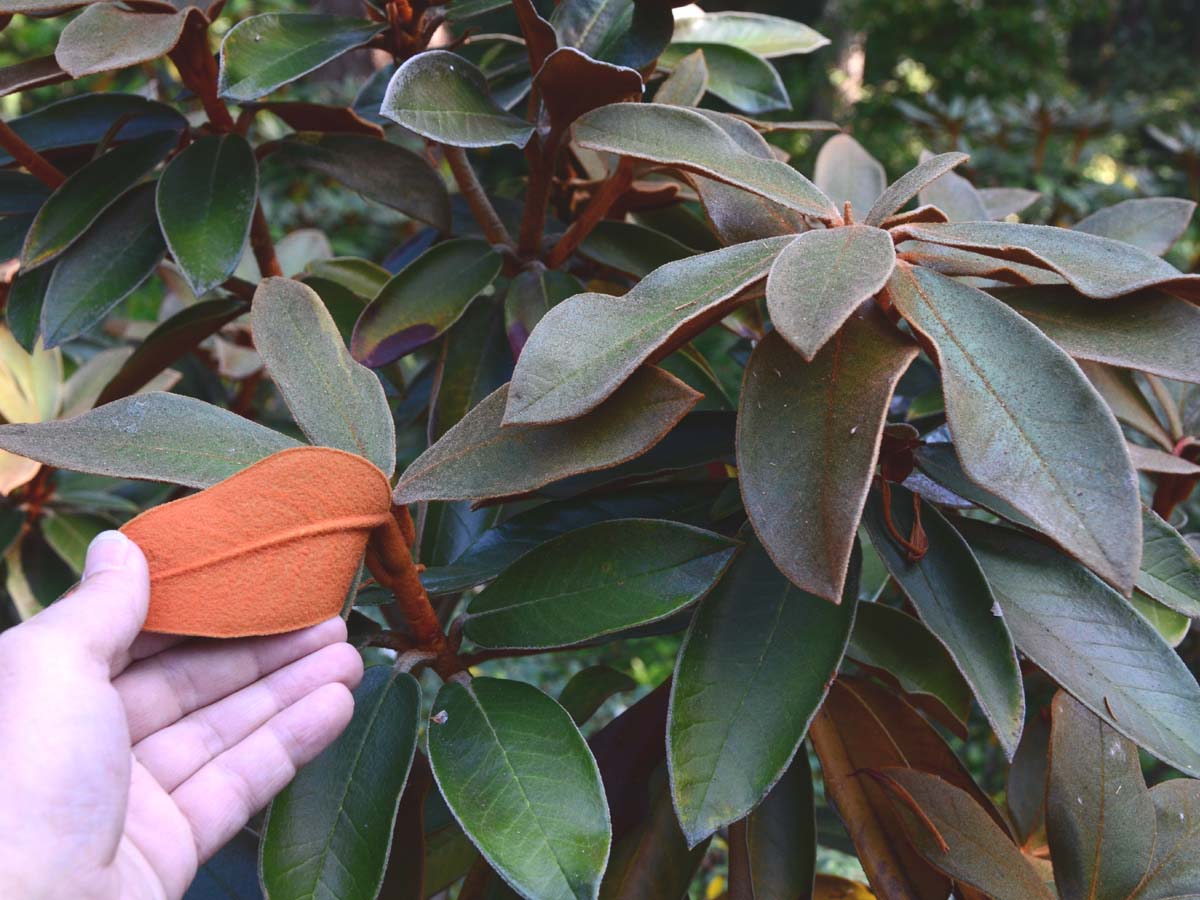
Rhododendron bureavii Note the heavy, rusty brown indumentum on the undersides of the leaves and on stems. A lighter dusting of tomentum is visible on the top surface of the current season's growth. Leaves from the previous season have no tomentum. |
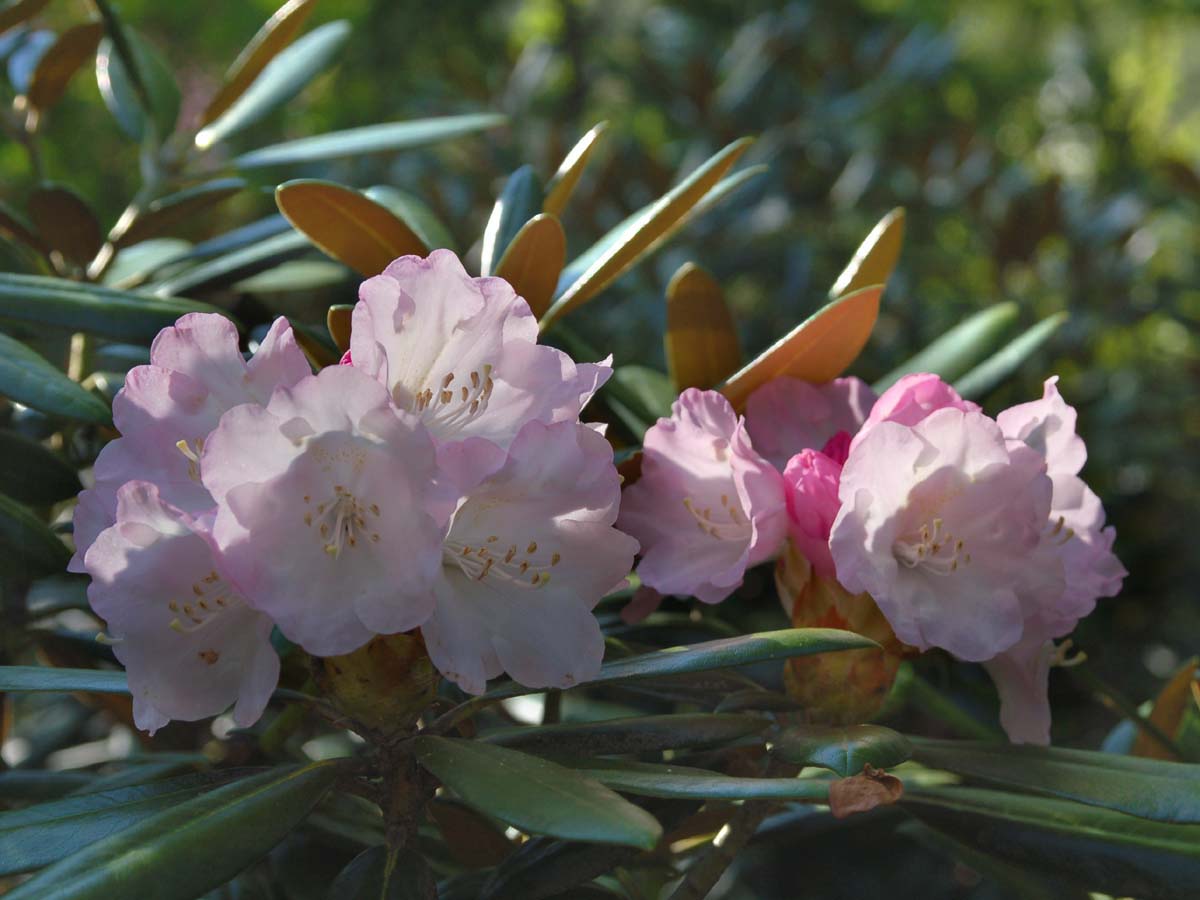
This R. degronianum hybrid is an Elepidote and has indumentum. |
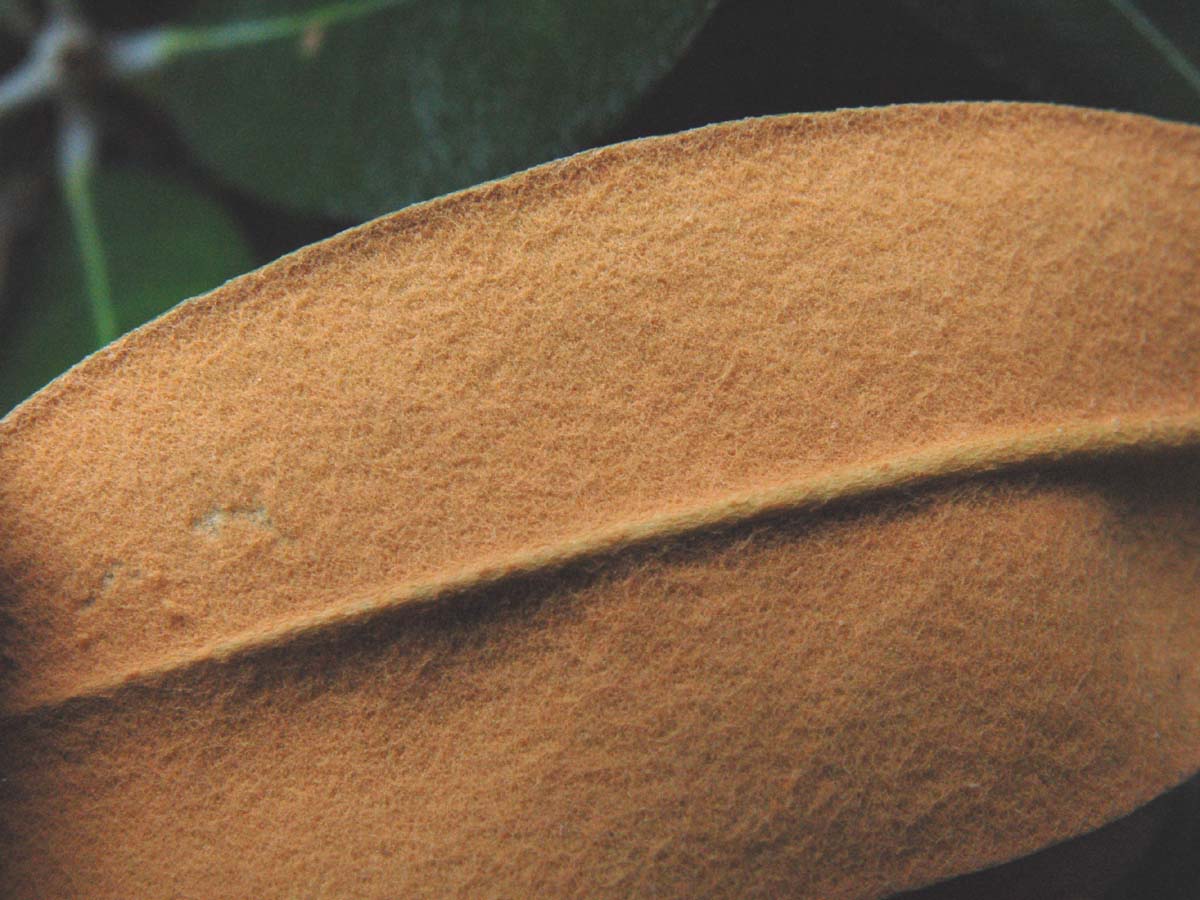
Closeup of the indumentum on the back of that plant's leaf. |

'Wheatley' is an Elepidote rhododendron without indumentum. |

Closeup of the back of its leaf showing no indumentum or scales. |

'Olga Mezitt' is a Lepidote rhododendron. It has scales instead of indumentum. |

Back of this Lepidote's leaf has waxy scales. |

R. makinoi |

|
 |

|

R. campanulatum |
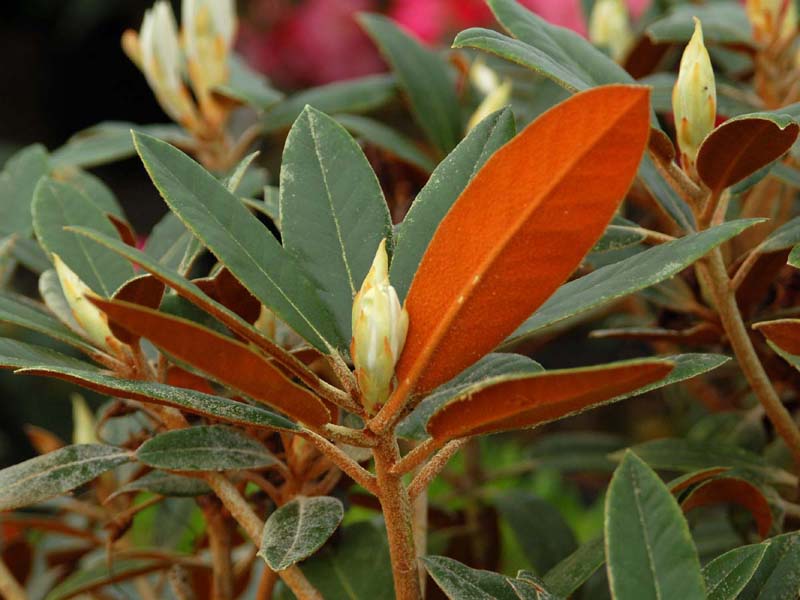 R. bureavii x 'Sir Charles Lemon' |
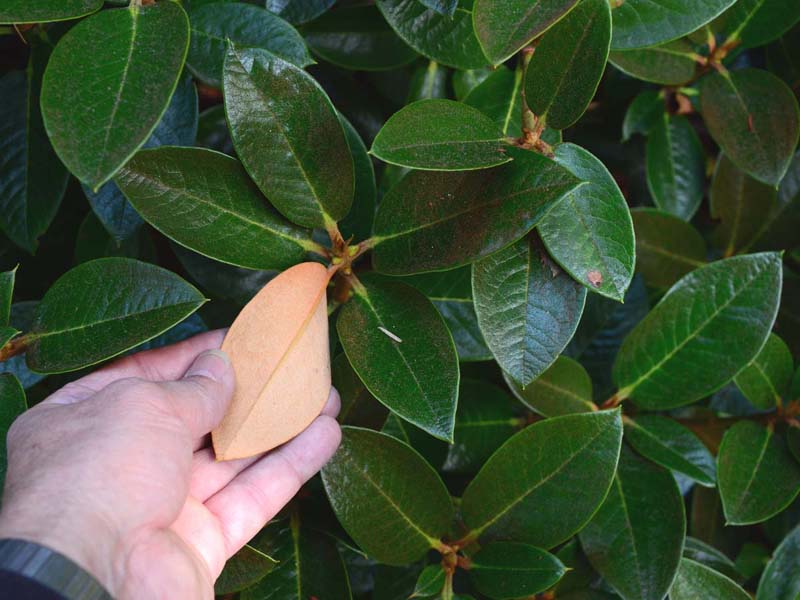
R. wasonii |
 |
 R. uvarifolium |

R. proteoides |
 |
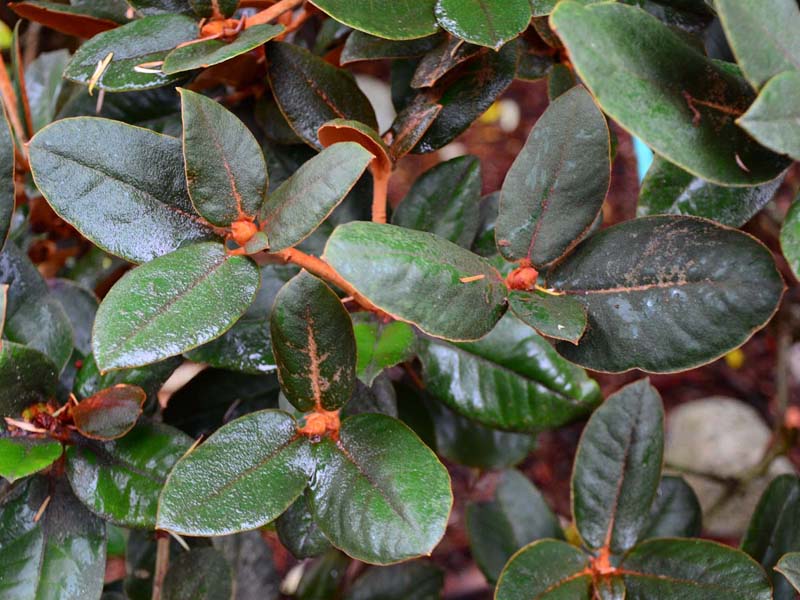 R. flinckii |

Tree-like trunks of R. arboreum |
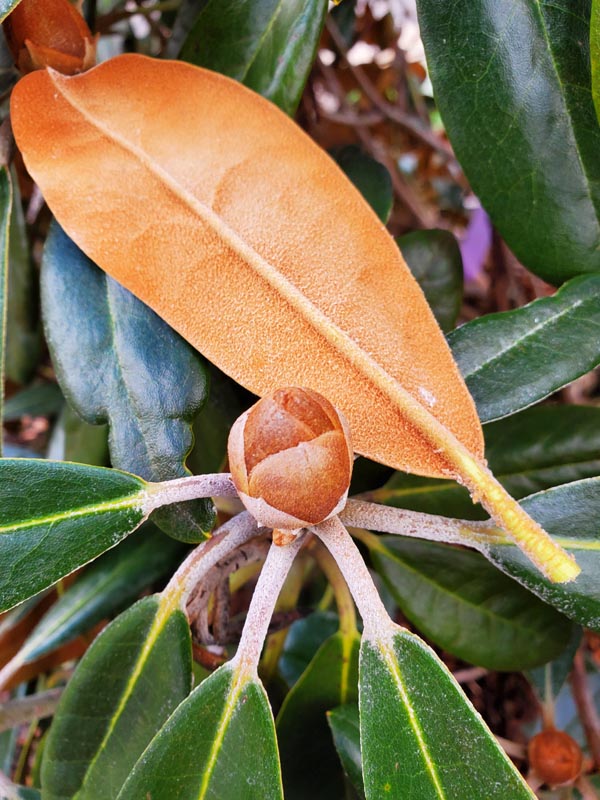
|
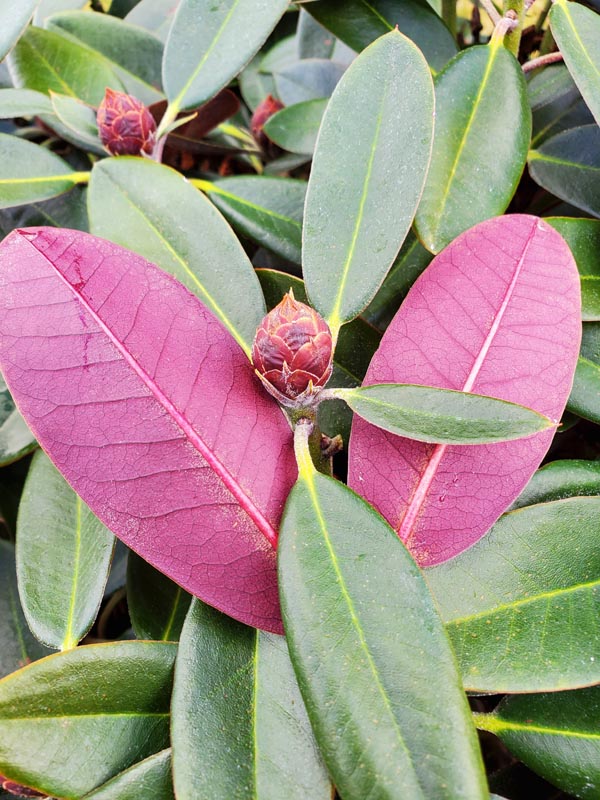 |

|